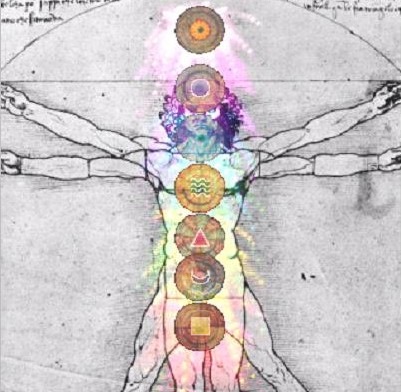In the teachings of Ayurvedic anatomy and physiology, there are veins and arteries just like in conventional anatomy and physiology.
However, also recognized are numerous energy channels, referred to as nadis, which are too subtle to detect with the human eye or even with a high-powered microscope. Nadis emanate from whirling energy centers—the chakras.
Nadis and chakras have both been discussed at length before. What hasn’t been discussed is what is referred to as “srotas.” Srotas are pathways for air, food, water and the seven tissues (plasma, blood, muscle, fat, nerve tissue and reproductive tissue). There is a pathway for “prana”—as in respiration and the mind, which is technically know as “manas”—the sense-perception mind.
The srotas have a root, a passage, and an opening. We may not be accustomed to thinking of the mind in such a manner, but Dr. Lad enlightens us in his book, The Textbook of Ayurveda. He explains that the root of the individual’s sense-perception mind (manas) is the heart (cardiac plexus) and the 10 sensory pathways. There are five senses in bilateral pathways.
The passageway of manas is the entire physical body. And the openings are the sense organs: ears, skin, eyes, tongue and nose. “Marmas” (the energy points, which are located all over the body like acu-points) are also openings for mind.
It might be pointed out that according to Samkhaya philosophy, which is the basis for Ayurvedic medical theory, the mind has four aspects:
Chitta, which is consciousness and the ability to discern dimension, beauty and harmony.
Buddhi, the intellect and the ability to make decisions.
Ahamkar, the ego and the sense of individuation.
Manas, the sense perception mind. Manas is often contrasted as the lower, individual mind with the higher, Universal mind.
The marma points are traditionally listed as 107 or 108 and sometimes 365, like in traditional Oriental Medicine.
When you think about it, what a person hears, touches, sees, tastes and smells affects their mind. Likewise, manipulations of the external openings of the mind via the marma and acu-points can also affect the mind.
The ideal in manipulating the marmas and acu-points is to bring benefit to the person receiving treatment. This is the principle behind marma therapy and acupuncture/acupressure. By manipulation of certain external points, one influences internal tissue, organ systems and the mind, promoting relaxation, health and beauty.
There are marma and acu-points, which affect all the srotas. There are 15 srotas (channels) and two extra for women: a channel for lactation and a channel for menstruation. In Polarity, we usually talk about the five elements and their association with the five chakras along the spine: ether, air, fire, water and earth. These are spinning energy centers that carry out their physiological function by way of the nadis (energy channels). The chakras are the subtle function behind the three nervous systems – central, sympathetic and parasympathetic.
The chakras have a relationship to sense perception. The subtle aspect of ether is sound and hearing; the subtle aspect of air is touch; the subtle aspect of fire is sight; the subtle aspect of water is taste; the subtle aspect of earth is smell. The higher energy centers are not discussed in too much detail, but only acknowledged due to the fact that they are usually accessed through programs of yoga and meditation, not manipulation.
Addressing individual marma points which relate to the chakras:
Sthapni marma, which is acu-point yintang, is located between the eyebrows. It controls the sixth chakra (Ajna), prana, the mind (manas), the senses, pituitary gland and the meeting of the nadis in the head, which include pingala (positive current), ida (negative current) and sushumna (the neutral current that runs through the center of the spine).
Neel marma, located near acu-point stomach nine and 10, is a large area of the lower neck, just lateral to the trachea. It governs Brajaka pitta (combined fire and water principle), which is the heat of the skin, speech, thyroid and circulation to the brain. Its location is at the ether chakra.
Hridaya marma, which is at the same location as acu-point conception vessel 17, but is much larger, is located in the general region of the heart, the middle of the sternum. It controls the tissues of plasma and blood; the circulatory systems and the air chakra.
Nabhi marma, which is the same as acu-point conception vessel eight, but is much larger in size, is located in the navel and surrounding area. It governs the fire chakra, which includes digestion and exertion. This controls digestive fire (the fire of the solar plexus located in the first third of the small intestine), digestive juices, bile and pitta (combined fire and water principle) in the whole body.
Basti marma, which includes acu-points conception vessel two through six and is located between the pubic symphysis and umbilicus in the region of the lower abdomen and the surrounding area above the bladder. It governs the muscular system and bodily fat and kapha (combined earth and water principle), according to Dr. David Frawley in his book Ayurveda and Marma Therapy. This point affects the second, water chakra.
Guda marma, which includes acu-point governing vessel 1 and acu-point conception vessel 1. It is located at the anus and surrounding area. It governs the earth chakra, the channels of excretion urination, reproduction and menstruation as well as the testes and ovaries.
Love elephant and want to go steady?
Sign up for our (curated) daily and weekly newsletters!
Apprentice Editor: Andrea Charpentier/Editor: Jenna Penielle Lyons
Photos: Elephant Journal Archives
 Share on bsky
Share on bsky






Read 0 comments and reply